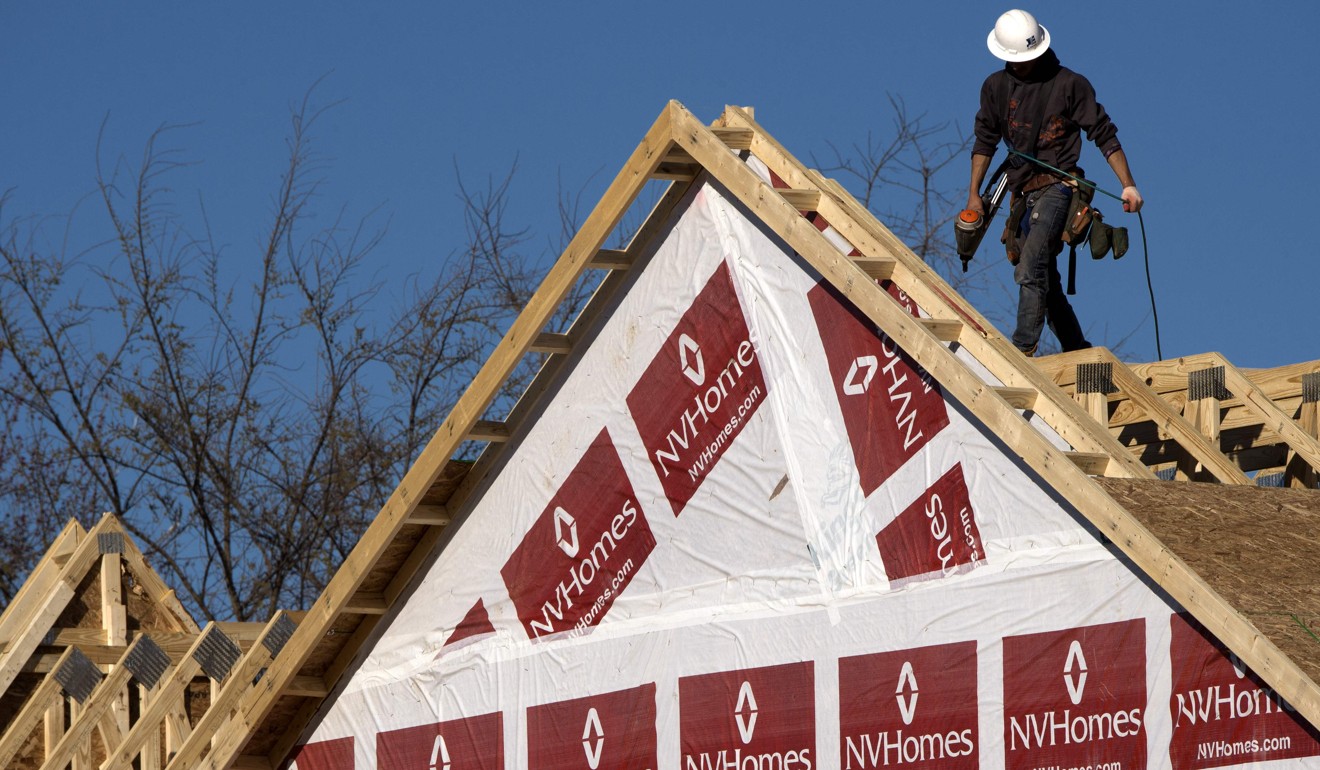
US second quarter GDP revised higher as it notches quickest pace of growth in two years
The US economy grew faster than initially thought in the second quarter, notching its quickest pace in more than two years, and there are signs that the momentum was sustained at the start of the third quarter.
Gross domestic product increased at a 3.0 per cent annual rate in the April-June period, the Commerce Department said in its second estimate on Wednesday. The upward revision from the 2.6 per cent pace reported last month reflected robust consumer spending as well as strong business investment.
Growth last quarter was the best since the first quarter of 2015 and followed a 1.2 per cent pace in the January-March period. Economists had expected that second-quarter GDP growth would be raised to a 2.7 per cent rate.
Retail sales and business spending data so far suggest the economy maintained its stamina early in the third quarter. Economists saw a limited impact on growth from Hurricane Harvey, which devastated parts of Texas.
“The impact on the national economy will be minor,” said Gus Faucher, chief economist at PNC Financial Services in Pittsburgh. “While some output will be lost in the wake of the storm, most of the difference will be made up in the months ahead.”

Growth estimates for the third quarter are as high as a 3.4 per cent rate. Other data on Wednesday showed private employers ramped up hiring in August, adding 237,000 jobs to their payrolls. That was up from 201,000 jobs in July.
The ADP National Employment Report was released ahead of the government’s more comprehensive employment report on Friday, which is expected to show solid job gains in August and diminishing labour market slack.
The dollar firmed against a basket of currencies, while prices for US Treasuries fell. US stocks rose.
Strong growth and a labour market that is near full employment support views the Federal Reserve will announce a plan to start unwinding its US$4.2 trillion portfolio of Treasury bonds and mortgage-backed securities next month and increase interest rates in December.
With GDP quickening in the second quarter, the economy grew 2.1 per cent in the first half of 2017. While that was up from the 1.9 per cent reported last month, economists said it was unlikely growth this year would breach Republican President Donald Trump’s ambitious 3.0 per cent target.
“Underlying domestic demand in the economy is consistent with near three per cent growth but the supply-side of the economy is not capable of delivering such a pace of growth at this point,” said John Ryding, chief economist at RDQ Economics in New York.
The Trump administration is targeting tax cuts, deregulation and infrastructure spending to boost growth. However, it has so far failed to pass any economic legislation and is yet to articulate plans for tax reform and infrastructure.
Chances are slim that the Republican-controlled US Congress will debate and pass tax reform legislation before the end of the year. Touting the second-quarter growth pace, Trump said on Wednesday he was ready to work with Congress on tax reform.
“This is our once-in-a-generation opportunity to deliver real tax reform for everyday hard-working Americans and I am fully committed to work with Congress to get this job done and I don’t want to be disappointed by Congress, do you understand?” Trump said at an event in Springfield, Missouri.

Consumer spending, which makes up more than two-thirds of the US economy, grew at a 3.3 per cent rate, the fastest in a year, reflecting more spending on motor vehicles, cellphones, housing and utilities than previously estimated.
That was revised up from the 2.8 per cent pace reported in July and accounted for the bulk of the pickup in economic growth in the second quarter.
But stronger consumer spending came at the expense of saving amid sluggish wage gains. The savings rate slipped to 3.7 per cent from 3.9 per cent in the first quarter. The second-quarter savings rate was previously reported at 3.8 per cent.
Households cannot, however, continue to rely on savings indefinitely to fund their consumption. This raises doubts on the sustainability of the robust pace of consumer spending.
Despite the acceleration in consumer spending, inflation remained benign in the second quarter.
The Fed’s preferred inflation measure, the personal consumption expenditures (PCE) price index excluding food and energy, increased at a 0.9 per cent rate as previously reported. Last quarter’s rise was the slowest in more than two years and followed a 1.8 per cent rate of increase in the first quarter.

